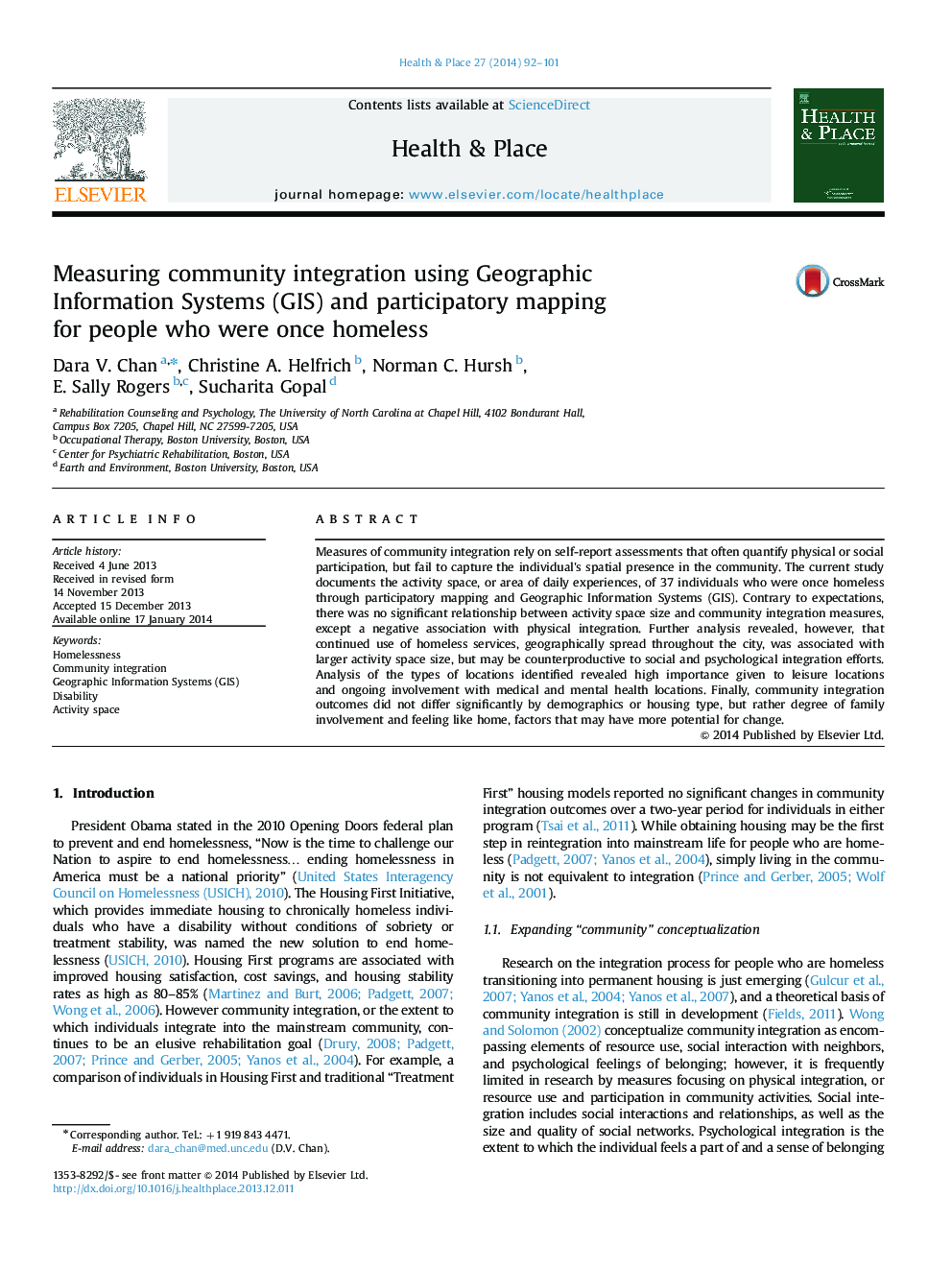| Article ID | Journal | Published Year | Pages | File Type |
|---|---|---|---|---|
| 7458682 | Health & Place | 2014 | 10 Pages |
Abstract
Measures of community integration rely on self-report assessments that often quantify physical or social participation, but fail to capture the individual׳s spatial presence in the community. The current study documents the activity space, or area of daily experiences, of 37 individuals who were once homeless through participatory mapping and Geographic Information Systems (GIS). Contrary to expectations, there was no significant relationship between activity space size and community integration measures, except a negative association with physical integration. Further analysis revealed, however, that continued use of homeless services, geographically spread throughout the city, was associated with larger activity space size, but may be counterproductive to social and psychological integration efforts. Analysis of the types of locations identified revealed high importance given to leisure locations and ongoing involvement with medical and mental health locations. Finally, community integration outcomes did not differ significantly by demographics or housing type, but rather degree of family involvement and feeling like home, factors that may have more potential for change.
Keywords
Related Topics
Health Sciences
Medicine and Dentistry
Public Health and Health Policy
Authors
Dara V. Chan, Christine A. Helfrich, Norman C. Hursh, E. Sally Rogers, Sucharita Gopal,
